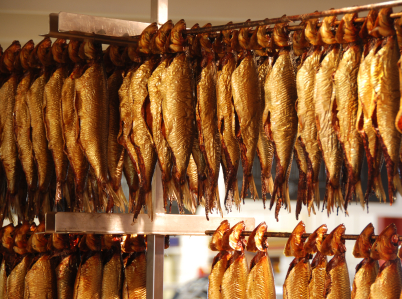
Autumn Leaves and Harvest Moon by David Rose
Admittedly, I’m sad this year. This is the first fall in a good long while I haven’t had a fall harvest; and it was all because I moved. Alas, now I understand the appeal of an agrarian culture and what must have drove our ancestors to stay put.
There is something magical about this time of year. We celebrate life, bountiful foods, the changing of the season, death of plants, and the cycle of life. It is a symbol to us not only of the changing world, but also of the changing of work loads with ample food and less time in the fields coming soon.
As the weather cools down, you can travel the world to see various harvest festivals as their local plants come to full maturation. As they do, you see school children and adults waxing poetical about the world, communities gathering around their local flavours in celebration, visitors coming to town to try new things, and festivals of just about every imaginable variety from sauerkraut festivals to beer festivals to hay rides and more.
This time of year, despite the trees readying themselves to hibernate till spring, it’s a time for joy, life, and community.
More Than Celebration
In both modern and historical times, though, it was not that straight forward. Preservation of food was foremost on the mind for the farmers and keepers of the food. Should we salt and dry? Should we freeze and store? Should we can? Should we pickle? Each culture and time had their favourite methods based on technology and needs of the community.

Smoked herring found at Rural Spin.
Some methods of food preservation are easier than other. Canning, for example, takes a bit of time, but it’s super easy. Drying food is even easier — and one of the oldest methods in the world. The thing is, there are so many options that you need a bit of preparation before diving in. Which one? One of the best overviews I’ve ever read of food preservation is from Rural Spin. You’ll be able to find the full version of their article there, but I’ll put a summary here for you.
Burial: Simply bury the food in a cache where it can dry out. This is best in either ice or desert extremes.
Candying: Saturating food with enough sugar to keep out bacteria and kill any that might have been there.
Canning: Sealing foods in a can using a water bath or a pressure cooker, which not only kills of many germs, but seals the environment away from them.
Curing: The use of salts and sometimes sugar to dessicate and create a very unfavourable environment for germs. Brines also fall under this category, but it’s definitely more wet.
Drying: This is a common way to preserve herbs and flowers alike by simply hanging up the plants so the air flows through them and dries them out.
Fermenting: A process by which one substance is broken down into a simpler substance with an enzyme, yeast, bacterium, or mould in an anaerobic conditions. Yep, that’s alcohol and others right there. Just take away the oxygen and let the enzymes do their magic.
Freezing: When you blanch food, you are stopping the enzymatic in it’s tracks. The food doesn’t age, but it can still rot. Freezing stops that process very neatly and for long periods of time.
Jellying: This isn’t jam, but rather when food is cooked in a substance that produces a jell, which seals around the food and prevents oxygen — and bugs — from getting in.
Pickling: Vinegar, brines, alcohol, and oil — oh my! All of these can be used to pickle meats and vegetables to flavour the food while also fermenting.
Potting: Potting is a method where a meat and/or vegetables were stored in a jar, covered with hot fat that seals out any air and microbes once solidified.
Smoking: Smoking is among the oldest preservation methods along with burial and drying. It is a form of drying that is sped up with the use of heat and the addition of smoke. It dessicate the meat to limit microbe growth.
No matter what preservation method you choose, remember the key is to limit the chances for food-borne illness. This means heating things up, drying things out, and sealing them away from the world in some way. The style all depends on your taste buds and desires.

